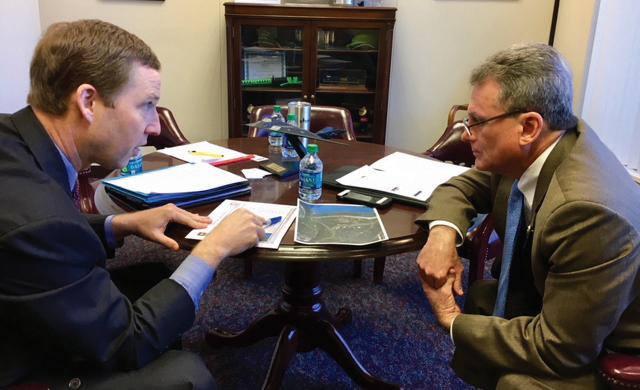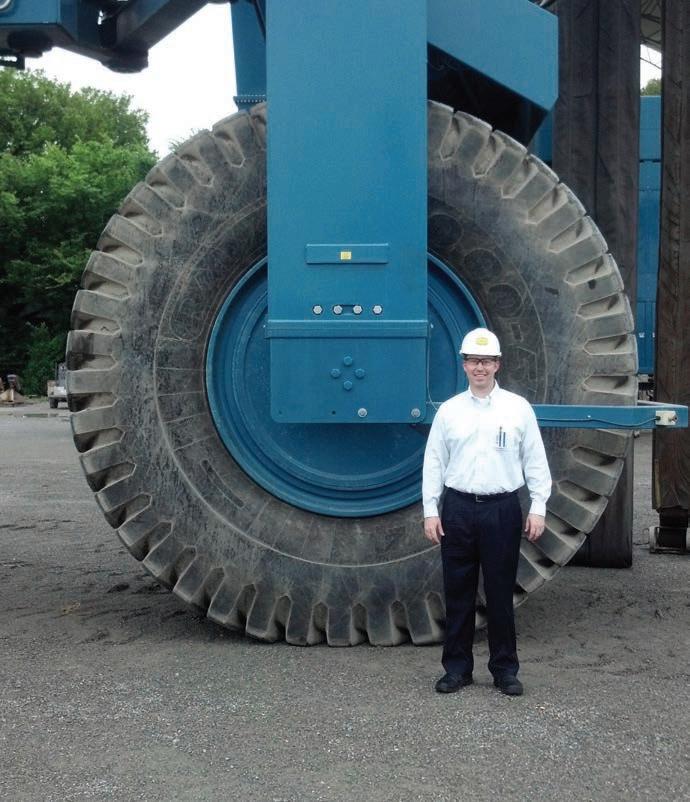
5 minute read
ATLANTIC INTRACOASTAL WATERWAY A Q&A with AIWA President Brad Pickel
Designated as Marine Highway 95, the AIWW is a shipping route that parallels the U.S. East Coast, serving ports from Norfolk, Va., to Key West, Fla.—a stretch of more than 1,100 miles. Some lengths of the AIWW consist of manmade canals, others of natural inlets, saltwater rivers, bays, and sounds.
In 1919, Congress authorized the creation of the AIWW and the full length of the waterway was completed in 1940. And like other U.S. waterways, the U.S. Army Corps of Engineers is responsible for maintaining the AIWW.
Advertisement
Today, numerous shipping companies rely on the AIWW and shipyards can be found throughout the waterway. In an effort to help secure funding and support for the maintenance of the AIWW, the non-profit Atlantic Intracoastal Waterway Association (AIWA) was formed in 1999. AIWA members include shippers, tug and barge companies, shipyears. He has also worked in a Washington, D.C., government affairs advocacy firm, is a board member and executive committee member for the National Waterways Conference Inc., and is active in other professional organizations related to waterborne transportation.
We talked to Pickel to get a better idea of the unique challenges and makeup of the AIWW.

Marine Log (ML): Can you comment on some recent innovative projects and opportunities that may impact shippers on the Atlantic Intracoastal Waterway?
A containership unloads at Boston, Mass.—the head of the Brad Pickel (BP): The Atlantic IntraAtlantic Intracoastal Waterway. coastal Waterway Association believes the diversity of our membership demonstrates the value of the waterway. Our commercial partners are actively involved THE ATLANTIC in identifying opportunities to increase the usage of Marine Highway 95 as the first option for bulk commodities, such as INTRACOASTAL WATERWAY: scrap iron, DRI, containers by barge, acid, etc. Also, the waterway serves the needs of shipping materials that can’t, or aren’t feaAn Important Shipping Corridor sible to move by road or rail. Whether it is submarine parts moved from South Car-
At this time of year, we typically recreational boaters. to South Carolina, the AIWW is the low put together a feature story Brad Pickel, executive director of AIWA, profile, marine highway that continues to on shipping along the Atlan- says the association serves as the unified serve our nation. tic Coast. This year, however, voice of the waterway. He has experience in we’re doing something a lit- water resources and coastal management ML: Do your members have much tle different by taking a look at the Atlantic from previously overseeing coastal man- crossover with shippers on the AtlanIntracoastal Waterway (AIWW). agement issues in Florida for more than 15 tic Ocean or Coast?
olina to Virginia, or jet fuel from Florida yards, and other associations, marinas and Pickel (left) meets with U.S. Rep. Earl “Buddy” Carter of Georgia District 1.

BP: Absolutely! If something comes in from overseas and needs to move north or south along the eastern seaboard, our members and others are active players. Our members also actively monitor project cargo delivery of components arriving by ship in the various ports along the East Coast. We believe that if the waterway was better maintained to its approved depths and widths, more commerce would transit along the waterway. As pointed out by our partners in the Maritime Administration of U.S. Department of Transportation, we are the Marine Highway that connects some of our most valuable exit ramps (ports) to the world.
ML: In addition to COVID-19, what have been some of the biggest challenges to shipping in your region?
BP: The commercial industry community has well defined protocols in place to ensure safety of its crews. Most of what our members are involved in on the East Coast is infrastructure related. Those projects haven’t shut down, as they are deemed critical.
One ongoing challenge for most waterway infrastructure projects is consistent funding to address ongoing maintenance. Over the past two years, we have received almost $50 million total in federal funding to conduct projects in each of the five states along the AIWW. These allocations have allowed us to decrease the backlog of maintenance projects from $126 million in 2016 to just over $74 million in 2020. Securing funding for our projects will continue to be our main focus and one the challenges facing our waterway users.
ML: What makes the AIWW a unique shipping lifeline?
BP: The AIWW provides shippers an opportunity to run the inland route, as opposed to running offshore. This is a great benefit as weather often impacts the ability to ship offshore. Transiting inland also allows you to have less tie-down restrictions for cargo, and if the weather changes, it’s much easier to seek safe harbor.
ML: What are some important pending issues that shippers should keep an eye out for in 2021? Pickel during a visit to Colonna’s Shipyard in Norfolk, Va.

stretches across all groups is workforce development. We need to increase the skills and availability across all marine trades as Americans return to work to ensure the workforce is not spread thin again.
Prior to the pandemic, the AIWA hosts an annual meeting that brings together its members with decision makers and stakeholders, including the U.S. Army Corps of Engineers, NOAA, U.S. Coast Guard, elected officials, business leaders, marine press organizations, and others who work and advocate for the waterway.
This year, the organization received a total of almost $28 million for waterway projects for FY2020 appropriations. AIWA set a new high-water mark for non-disaster funding by surpassing FY19 by over $3.5 million. This trend is continuing in the right direction for the waterway.
In the spring of 2020, AIWA worked with congressional members and staff from 19 Offices representing 6 states to sign on to a multi-state, bipartisan delegation letter for FY21 request for increased funding for dredging needs.
Brad Pickel, Executive Director of AIWA




